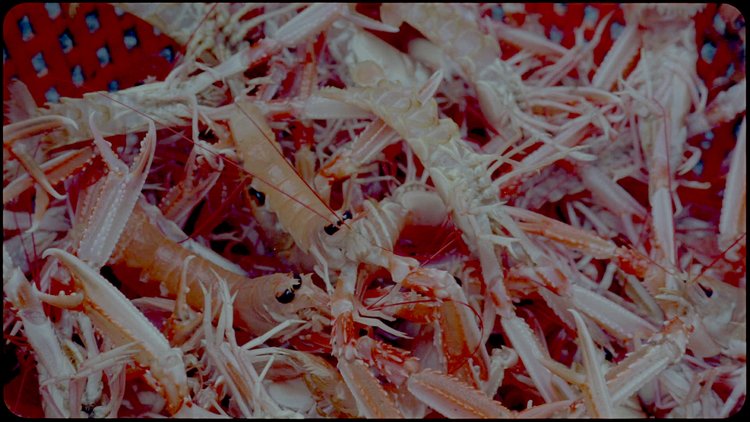Films and Tour
Following a tenth month tour journeying along the Scottish coast line, the Shore: How We See The Sea tour concludes at Dynamic Earth in Edinburgh. The tour features work by Scottish-based artists Ed Webb-Ingall and Margaret Salmon, whose films were commissioned by Invisible Dust; a body working with leading artists and scientists to create artworks exploring our environment and climate change. The films record and explore the lives of those who live and care for the sea in Scotland, as well as the local and national impacts of Marine Protected Areas (MAPs).
Screening at nine locations in total and concluding with a film screening and research presentation previously on Friday night, the panel conversation emphasised the importance of the tour itself as being a vital part of the process. By bringing artists and filmmakers into the project and tour, Invisible Dust has enabled the conversation to expand beyond the local communities and scientific specialists to reach a broader audience.
Creative Practice
Approaching the subject matter very differently, Ed Webb-Ingall and Margaret Salmon both made films exploring the sea and MAPs issues. Ingall’s ‘I walk there every day but I never saw it that way’, utilises community video – a mode of film making which stems from dialogical exchange, interviews and workshop situations. Through this, he often allows the video camera to be passed around the participants he is recording, in order ‘to create a sense of shared authorship’. The camera shifts and moves and cuts, fuelling the notion of this duplicity of voices. By sharing the camera and microphone amongst participating bodies, Ingall encourages not only physical participation, but also the sharing of questions; therefore culminating in an open and interrogating film.
Similar at times, but also taking a very different approach, is Margaret Salmon’s Cladach. This creates a portrait not only of life above and along the shoreline, but also under it. Alongside a documentation of local community life; ranging from the mundane act of eating fish and chips in the pub, to more collective activities such as Scottish country dancing, Salmon’s film captures the everyday lives of locals. She also overlays Gaelic speech and singing, which is threaded alongside imagery of the shoreline.
Utilising a hydrophone to record footage, Salmon later submerges the viewer and charts the intricacies of underwater life. Sea cucumbers sway nonchalantly in the water, a small jelly fish slowly bobs across the ocean floor, a star fish wiggles peacefully on a body of rocks. Through intimate shots of underwater creatures, Salmon forces the viewer into an awareness of the oceanic rhythms. The thump of the waves suddenly become amplified and the only noise the viewer can hear; forcing the viewer into an acute awareness of the natural world and seascape.
Exhibition Content
Accompanying and recording throughout these film projects, creative ethnographer Mairi McFadyen has documented the thoughts and observations of each community in order to construct a ‘chain’ conversation that builds as it travels down the coast. A sonic documentary to further expand knowledge and awareness of the issues surrounding MAPs, the audio recordings invite the viewer to listen to both collective and personal experiences.
Exhibition documenting the participating communities will be on display Tues 9–Sun 21 April at Dynamic Earth.
